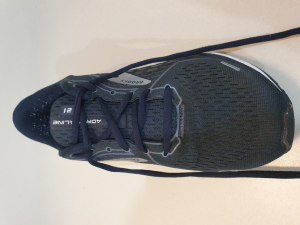What is shoe lacing technique?
If you look at your feet right now there’s a 70% chance you are wearing shoes with laces. Occasionally our shoe may not feel just right. Different brands will vary in shoe shape and may not accommodate to everyone’s foot size (shape). Some options to improve footwear comfort is finding the right size, adding an over the counter or custom made orthotics, finding the shoe to suit your activity. But have you ever considering just changing the shoe lacing pattern?
Changing shoe lace patterns are an easy, inexpensive option to improve the comfort and support of your feet. If your footwear purchase is passed its return period, below are a few suggestions to consider if you shoe aren’t feeling just right.
Shoe lacing with wide forefoot:
This lacing technique will reduce the squeeze at the ball of the foot. This may be beneficial if you have a broad forefoot, tingling and numbness at the toes, bunions, sore toes or clawed toes.

Shoe lacing with wide foot:
Similar to the wide forefoot technique this will assist to reduce the pressure and squeezing of the entire shoe. This may benefit patients with swelling at foot and ankle. Eg Swelling after a foot surgery, swelling after ankle sprains.

Shoe lacing with narrow foot:
On the opposite end of the spectrum to wide; narrow feet can also move side to side within a shoe. This may be the laces for you. Eg: if your shoes are too large in size.

What to do for heel slipping or loose heel:
If your shoe is slipping at the heel, or you feel your foot shuffling forward towards the tip of the shoe heel locks can be the solution for you. Using shoes with a 7th eyelet may help to hold the heel in place.

Shoe lacing with high arch or top of the foot pain
The top your foot can experience rubbing if you have a higher arch foot type. The friction may also be due to a bump or bony changes on the top of your foot. Trial the below technique if this is your issue.

Combo lacing technique:
As the name suggest we may need a combination of lacing techniques. Just like our faces our foot varies in shapes and sizes from person to person. Some people are wide at the forefoot, narrow at the midfoot, and swollen in the rear foot.

During a podiatry appointment bring all the shoes you wear on a regular basis. A podiatrist can measure your foot, assist in changing the laces for you to best suit you, and giving further recommendation on which footwear is best for your given activity.
Call the podiatry team on the hot foot line 02 9252 2825 if you have footwear questions.
Post by: Podiatrist Richard Ching




